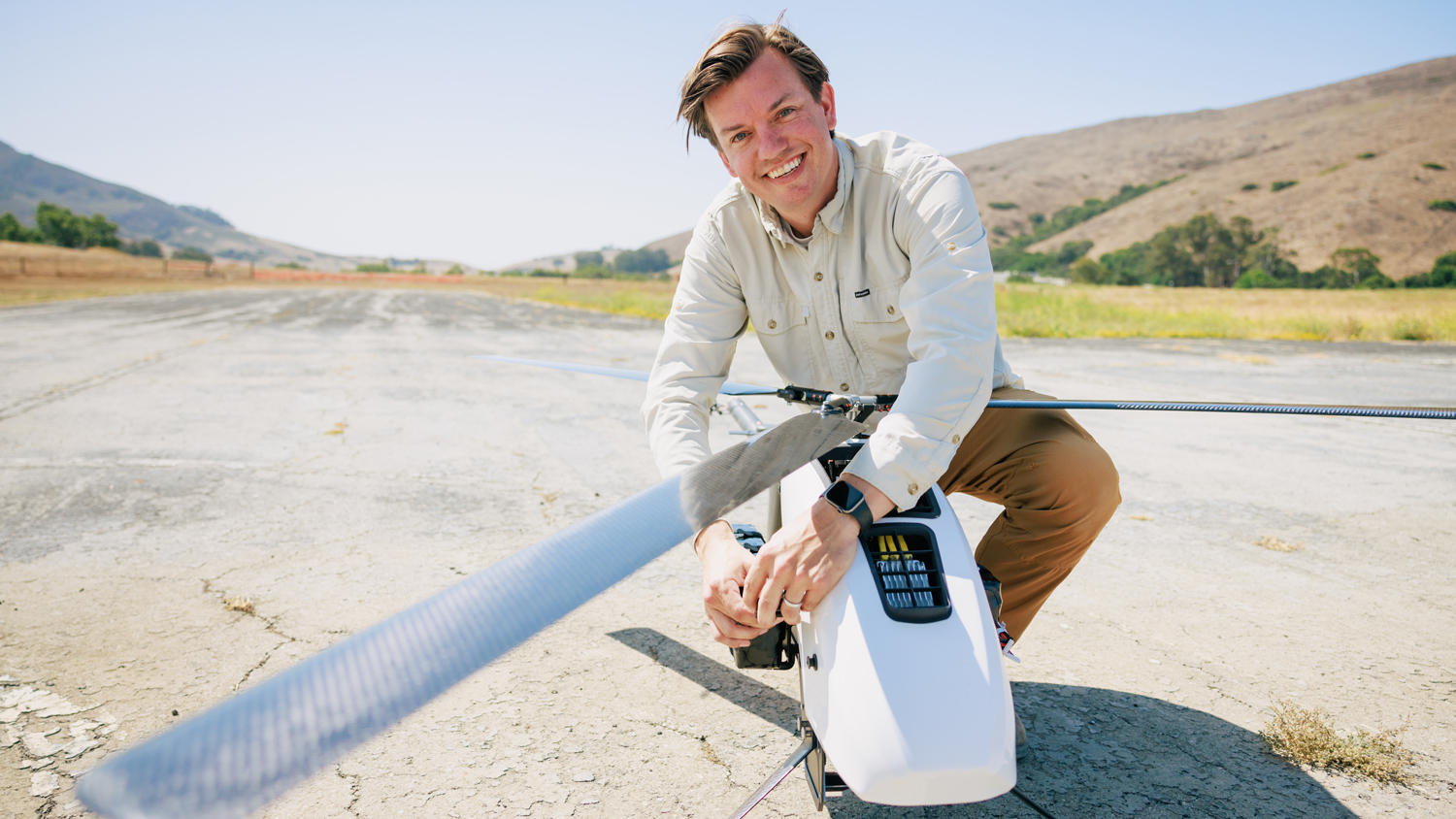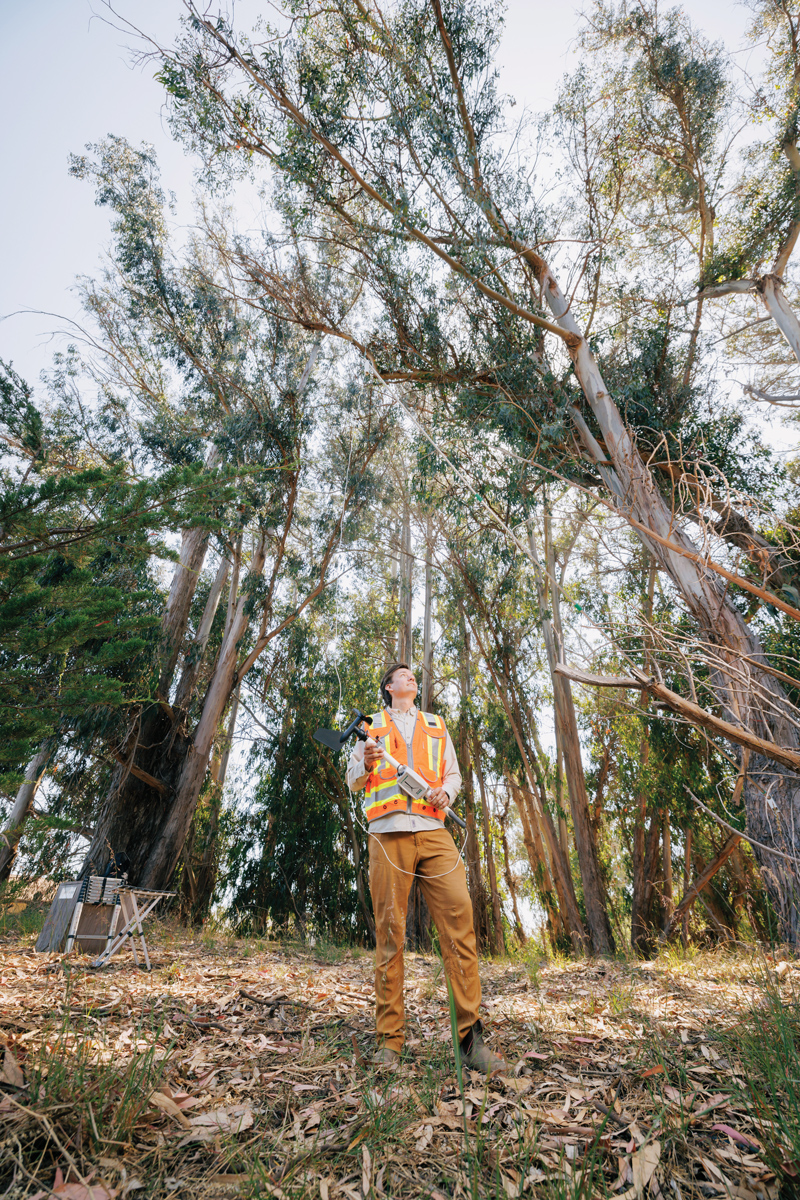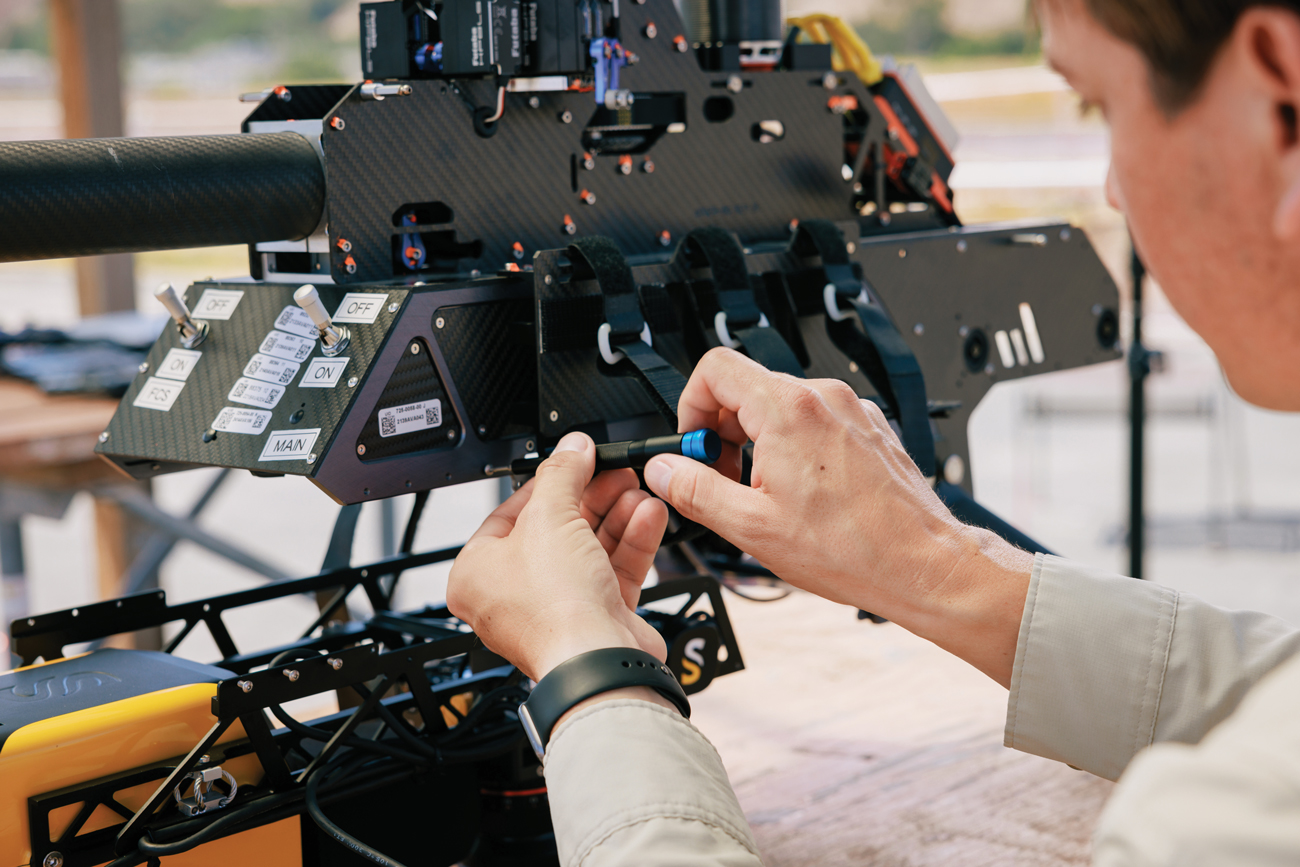When Research Takes Flight
One student is working to help monarch butterflies survive — and thrive — through wind research.

Monarch butterflies (Danaus plexippus) are one of the most beloved insects in the world.
We paint them into murals, plant milkweed in our yards, raise them in classrooms — even host parades in their honor. But they’re at risk: Monarch butterfly populations are at historic lows, down 95% in the West from the 1980s. Monarchs are a candidate for the Federal Endangered Species Act and are expected to be listed soon. The research that I’ve chosen to take on at Cal Poly, and other monarch butterfly research going on across the United States, is urgent.

Nessen collects wind speed measurements at the Pismo Beach Monarch Butterfly Grove.
As you probably remember learning in school, monarch butterflies undertake one of the greatest annual known migrations in the animal kingdom. Throughout the spring and summer months, the butterflies radiate north from their overwintering groves in the mountains of Michoacán, Mexico, and the coast of California, venturing as far as Canada to reproduce. In the fall, monarchs travel up to 3,000 miles back to their original overwintering groves. While we understand some of what goes into the butterflies’ selection of overwintering groves, there’s a lot that scientists don’t yet know. I and other scientists believe conserving and enhancing monarch overwintering habitats is a critical step toward their recovery.
I first fell in love with monarch research when I assisted on a habitat restoration project during the overwintering season of 2022. On my first day, I saw thousands of butterflies grouped in clusters on a single tree dissolve into a spectacular display of orange and black as they all took off at the same time. It was breathtaking. My mentor, monarch expert Dan Meade, explained how the butterflies choose coastal groves to spend the winter in, and that eucalyptus trees in the grove protect butterfly clusters from strong winds during winter storms. I wanted to know how these extraordinary insects find these protected spots, and how people might plant new trees to help restore them.
My master’s thesis is focused on wind: specifically how monarch butterflies respond to strong wind events and how we can use computer simulations to produce better restoration plans. These questions require me to use my full set of technical skills and then go further.
To understand monarch behavior, I use a combination of cameras and wind meters to watch clustering butterflies during strong wind events. I designed a rig that would allow me to hoist the cameras up to 50 feet in the air on tall telescoping poles at Vandenberg Space Force Base to observe the butterflies in the trees. A study like this has never been done before, and my preliminary data has already produced surprising results. Previously, scientists thought that if wind speeds got above five miles per hour, monarchs would abandon the site. But my study has found that monarchs appear to tolerate much higher wind speeds: some of my observations have shown butterflies holding onto branches in winds 20 mph and greater, which has big implications for how we manage them.
I feel empowered by this experience and the knowledge that I can personally make a difference in this field.
I’ve also collected highly detailed wind measurements in many parts of the Monarch Butterfly Grove in Pismo Beach. Later this summer, I’ll fly a specialized drone that will allow me to create a “digital twin” of the forest. I’ll use this 3D model and simulation software to predict wind dynamics during our typical storms and then compare those values to what my instruments measure. Ultimately, this will allow us to visualize wind protection in a new way, but more importantly, we can experiment with our restoration plans. This approach will allow us to digitally “plant” and grow trees in gaps, and we can verify they will be effective without having to wait 10 to 20 years for the trees to fully grow.

Nessen adjusts his drone equipment before a test flight.
I’m fortunate to have the opportunity to pursue this question at Cal Poly with many talented and wonderful collaborators, including my advisors, professor Matt Ritter, a leading expert in both eucalyptus and urban trees, and professor Francis Villablanca, the leading expert in overwintering monarch ecology. I feel incredibly grateful that I can help contribute to monarch conservation, and that I am so well supported by my collaborators and grantors, including The Xerces Society and U.S. Geologic Survey.
Cal Poly is the perfect place to conduct an interdisciplinary project like this, where access to expertise and advanced tools are readily available. I feel empowered by this experience, and the knowledge that I can personally make a difference in this field. My takeaway is that when you commit to something, you’ll find people who will help you succeed.


